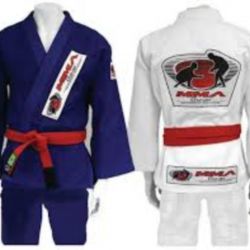7 Essential Tips for Beginners and Experts for Choosing the Best BJJ Gi
Introduction
Brazilian Jiu-Jitsu (BJJ) is a martial art that places a strong emphasis on grappling and ground fighting techniques. Central to the practice of BJJ is the gi, a traditional uniform that not only symbolizes the art's heritage but also plays a crucial role in performance and comfort during training and competitions. Whether you're a seasoned practitioner or a beginner looking to invest in your first gi, navigating the myriad of options available can be overwhelming. This comprehensive guide aims to simplify the process by outlining seven essential tips for choosing the best BJJ gi, ensuring that you make an informed decision that enhances your training experience.
1. Understand Your Needs and Preferences
The first step in choosing the best BJJ gi is to understand your specific needs and preferences. Consider factors such as your training frequency, competition goals, and personal style. Are you primarily training for leisure and fitness, or are you aiming to compete at a high level? Do you prefer a lightweight gi for increased mobility, or are you looking for a more durable option that can withstand rigorous training sessions? By clarifying these aspects, you can narrow down your choices and focus on gis that align with your requirements.
2. Know the Different Types of Weaves
BJJ gis come in various weaves, each offering unique characteristics in terms of weight, durability, and comfort. Common weave types include:
Single Weave: Lightweight and breathable, ideal for beginners and hot climates.
Double Weave: Thicker and more durable, suitable for frequent training and competition.
Gold Weave: A balance between single and double weaves, offering durability without excessive weight.
Pearl Weave: Lightweight and strong, favored by many athletes for its comfort and performance.
Understanding the differences between theselong sleeve rash guards can help you choose a gi that meets your specific training needs and preferences. For example, competitive athletes may opt for a pearl or gold weave for its balance of durability and performance, while recreational practitioners might prefer a single weave for its lightweight feel.
3. Consider Gi Sizing and Fit
Proper sizing and fit are crucial for comfort and performance in BJJ. Gis that are too loose can be cumbersome during training, while those that are too tight may restrict movement and cause discomfort. Most BJJ brands provide sizing charts that outline measurements for height, weight, and body type, helping you find the perfect fit. When trying on a gi, pay attention to the sleeve length, pant length, and overall comfort. A well-fitted gi should allow for full range of motion without excess fabric or restriction.
4. Evaluate Collar and Sleeve Construction
The collar and sleeve construction of a BJJ gi can significantly impact its durability and performance. Collars are typically reinforced with multiple layers of fabric and stitching to prevent grip breaks during training and competition. Look for gis with thick, stiff collars that are difficult for opponents to grip. Sleeve construction varies between long sleeve and short sleeve rash guards, with each offering its own advantages depending on your preferences


